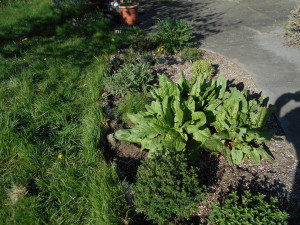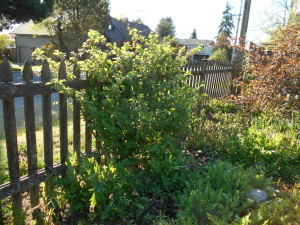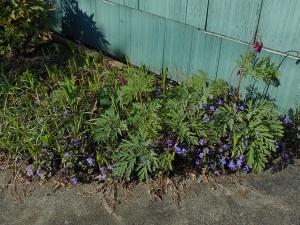The Lovesome Garden
“The garden is a lovesome thing, God wot.”
Thomas Edward Brown
As I walk around my own garden in early April, I feel like I do when I unpack the Christmas tree ornaments and see my old friends:
Sweet violets in the spring. I have a lot of them this year: patches of sweetness all over the garden. I see them every morning when I go through the gate into the cemetery, which is how I begin my morning constitutional. Soon that morning walk will be one of the few times I have shoes on my feet as I am mostly barefoot from May to October. My feet turn green from the grass stains and I go to bed happy.
On the other side of my path to the cemetery the kerria japonica waves its unruly orange stems. I don’t know what happened to the kerria except that my gardening companion, Tim, pruned it to the ground two years ago very nearly over my dead body and it’s taken it that long for it to stagger back to its feet.
Tim is a baritone in the OK Chorale who moved to my neighborhood five or so years ago. For the first time in his adult life, he did not have a garden. He asked me one day if I had any large gardening projects I wanted done; he missed the garden. Take a minute to digest the wonder of this request: he missed having a garden to muck in. He wasn’t asking for work.
My situation was that what used to be a lovely garden had become overgrown and unhappy as I got older. Arthritis has made it impossible for me to spend eight hours a day in the garden, something I used to do regularly. I was thrilled with Tim’s request. He and I embarked on a collaboration that’s been working –mostly smoothly– for three years. And the garden is not just lovely, it’s magnificent.
We’ve planted fruit trees (Santa Rosa plum, Italian prune, cherry) to keep company with my fig and my old Spartan apple tree. The fig tree is a revenge plant. It and a Japanese maple were given to me ten years ago by a friend who was going through a rancorous divorce. She had no place for the trees herself but she didn’t want her ex-husband to get them so she gave them to me. The maple is supremely happy, the fig is still having a little trouble recovering from the divorce.
Tim and I have planted blueberries, blackberries, currents, gooseberries and strawberries. There were raspberry bushes when I moved into this house in 1997. Every year I strip the bushes three or four times and put the berries in vodka to be made into a liqueur in the fall. This is the extent of my “canning.”
Many of the garden’s plants have come to me by way of the Garden Fairy down the street, another windfall I don’t know how I was so lucky to acquire. Annette works at a local nursery, which shall go nameless. Plants that lose their cultivar tags or start looking puny get marked down and put on the Table of Shame in back of the flourishing plants. Soon they are moved into a free pile for employees only. Annette loads her car. Flats of vegetables, vines, perennials—anything I ask for really—appear like magic on my front steps once a week for the entire growing season.
I planted the yosta berry –gift from a student—years ago. Yosta berries are a cross of gooseberry and current and they give my raspberry liqueur a zip and a tingle. I have had one too many squirmishes with sawflies, which devour the yosta’s leaves. I refer you to this:After the Tilth, the Deluge. I told Tim—in full presence of the yosta –that I had had enough and I wasn’t going to spray, dust or squish ever again. If the yosta wanted to live, it could do so without me. I think I scared it into participating in its own life because it’s flourishing joyfully right now.
Today I weeded the herb garden while chicken bones simmered their way into a broth. I’ll use the broth in sorrel soup. My three sorrel plants are big, fluffy and just about to bolt. I learned about sorrel when I spent a weekend at a friend’s summer home on Camano Island. She sent me into the garden to get sorrel to make the soup. I loved tramping in the wet grass with Gus the terrier to cut the sorrel and I loved the soup. I learned that people call it Weed Soup because sorrel is indestructible and grows in vacant lots and on parking strips.
And so begins the gardening year: seeds to plant, grass to mow, weeds to pull, flowers to deadhead, trees to prune. But this year no squishing of sawflies.
 RSS Feed
RSS Feed


Leave a Reply